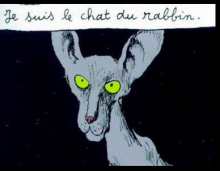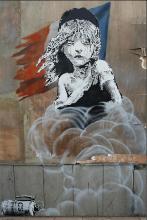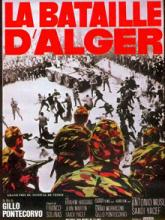The Department of French & Italian Studies is offering a variety of exciting classes in winter quarter!
Read below to check out some of our classes and their descriptions! If you have any questions regarding our courses, please reach out to frenital@uw.edu.
FRENCH 301 A: Francophone Graphic Novels (A&H)
Mondays & Wednesdays | 1:30pm - 3:20pm | Taught in French

FREN 301 Francophone Graphic Novels will introduce you to the genre of Francophone “comics,” the bande dessinée (BD). Through a selection of critically acclaimed BD you will reflect on important questions at the center of contemporary debates, including national identity, migration, race, gender, and religion, all while perfecting your French. We will conclude with a specialized module on the business landscapes of France and Québec. Aided by four graphic narratives, you will examine the cultural practices and conventions of French and Québecois workplaces and create a portfolio of materials for a francophone market.
FRENCH 302 A: Cultures of the Francophone World (A&H)
Tuesdays & Thursdays | 10:30am - 12:20pm | Taught in French

Qu’est-ce que c’est, la F/francophonie?! In this iteration of French 302 we will encounter texts that will interrogate what it means to be a member of the francophone world. Crossing borders and seas, our texts will allow us to navigate how movement across the francophone world influences cultural production in the 20th and 21st centuries. We will begin with the open letter signed by a group of contemporary authors who demand a cultural shift in the literary world (Pour une littérature monde...) before moving into some short stories that illustrate Guadeloupe’s changing landscape (Le Coeur à rire et à pleurer). Then we will look at cultural theory with Aimé Césaire and interrogate the role of national and world borders with a modern play (Ton beau capitaine). To finish this semester, we will watch a film that explores contemporary Franco-Haitian identity (Zombi Child)while interrogating the complex histories that inform our global geopolitical realities. Ultimately, this course and our selection of literary and cultural works will prepare you for continuation in the French learning trajectory while exploring the cultural elements that construct Francophone identities.
FRENCH 378 A: The Making of Contemporary France (A&H/SSc)
Mondays & Wednesdays | 12:30pm - 2:20pm | Taught in English

This wide-ranging course probes what France is today by considering the people, moments, and documents from the French Revolution to the present that attempt to represent France as a unified cultural space as well as those that complicate this narrative. One of the principal ways in which it does this is by juxtaposing moments in history in metropolitan France and the former colonies or present-day overseas departments and regions, where connected events such as the Revolution of 1848 play out in very different ways (the definitive end of hereditary monarchy in France vs. the abolition of slavery in the French Caribbean). It also does this by examining how the idea of France is complicated internally by a number of opposing tendencies: its equally important revolutionary and reactionary political traditions; its determined monolingualism and, in spite of it all, thriving minor languages; its credo of a singular culture (Republican Universalism) in the face of ascendant race-consciousness; its anti-immigrant reflexes and status as the birthplace of human rights. We will do so by examining a variety of types of texts: historical, scholarly, political, literary, and cinematic. In the 2026 iteration of this course, we will also visit the Seattle Art Museum Exhibition entitled "Farm to Table: Art, Food, and Identity in the Age of Impressionism." French majors or minors may opt for some readings in French.
FRENCH 457 A: HIV/AIDS in French Literature (A&H)
Tuesdays & Thursdays | 2:30pm - 4:20pm | Taught in French

What makes the literature of pandemic so profound and how is it unique in French and Francophone spaces?How does language influence the culture of illness? How do we read the literature in the decades following the discovery of the Human Immunodeficiency Virus today after having experienced the SARS-CoV-2 (COVID-19) pandemic? What are the differences between expressions of community in French spaces and Francophone spaces? How do we read Hervé Guibert with or against Guillaume Dustan?
In this course, we will examine these questions and more as they relate to contemporary literature and film. Through our study of theatre, novels and film, we will also explore how language impacts each work. (Conducted in French.)
FRENCH 470 A: Cinema (A&H)
Mondays & Wednesdays | 2:30pm - 4:20pm | Taught in English

This course is organized around films that can be seen as belonging to the emergent category of cinéma-monde, aka global cinema in French (and other languages). This organizing rubric can help us move beyond conceptions of “national cinema” and all of the interpretive impulses that category implies. Cinéma-monde is a term generally used to describe contemporary cinema, but we will take an historical perspective to see how a certain kind of French-language cinema has always been cinéma-monde and to grasp the extent to which the nature of the relationship between France and its former colonies continues to inform the themes, aesthetics, and financing/distribution of global cinema in French all the way up to the present.
TAUGHT IN ENGLISH: all readings and discussions in English; films subtitled in English; French majors and minors have the option of completing some modified (i.e., shortened) assignments in French.
ITAL 357 A: Race in Italy: Inventing Others in the Early Modern World (A&H, DIV)
Tuesdays & Thursdays | 2:30pm - 3:50pm | Taught in English

This course interrogates notions of racial and other kinds of difference as they evolved in Italy (and elsewhere in Europe) from around 1300 to 1700. Taking as its starting-point the white supremacist co-opting of an imagined “white” medieval culture, the course analyzes changing ideas about human bodies, race, gender, and geography within their own historical contexts. Starting with self-definitions of problematic categories like “Europe,” “Africa,” and “Italy”, as well as medieval ideas of race, we ask: How and why were certain bodies described as different? What do those descriptions tell us about the authors’ various agendas? And how and why did the category race increasingly refer to skin color rather than its earlier associations with religion, clan, or place of birth?
